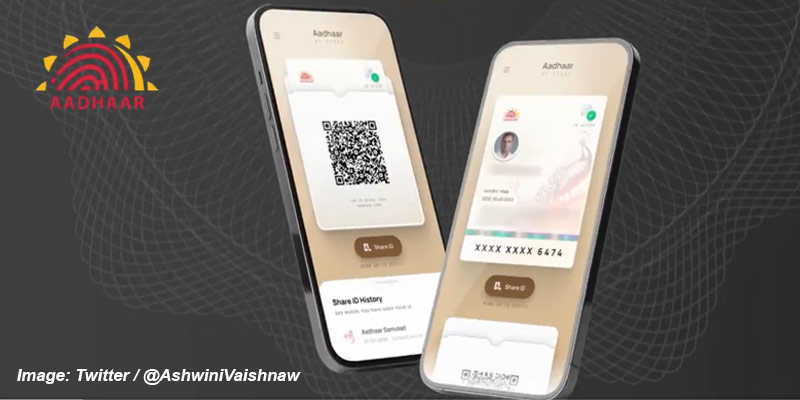- India
- Apr 10
UIDAI tests new app for Aadhaar verification using QR code
• Union Minister for Electronics and Information Technology Ashwini Vaishnaw showcased a new Aadhaar app that features QR code-based instant verification and real-time face ID for authentication, eliminating the need for people to carry physical photocopies or cards with them.
• Aadhaar verification becomes as simple as making UPI payment, Vaishnaw said.
• Once out of the beta testing phase and widely implemented across the country, this would mean that individuals, when asked for ID — say, at a hotel, airport, or by a train ticket checker — no longer have to hand over a paper Aadhaar.
• Instead of showing physical photocopies of their Aadhaar, the new app would enable individuals to verify their identity after the QR code scan.
• Just as UPI payment QR codes are widely available, at almost every point of payment in India, Aadhaar verification QR codes too would soon be available at ‘points of authentication’.
• People can just scan the QR code using the new Aadhaar app, and their face gets verified instantly. The ID is securely shared, directly from an individual's phone, not from a photocopy.
• The Aadhaar App ensures stronger privacy, prevents misuse or leaks of Aadhaar data, and offers protection against forgery or editing (like photoshopping of Aadhaar).
• UIDAI’s technology centre demonstrated the new Aadhaar app saying it will empower Aadhaar holders to share only the necessary data while availing services of their choice.
• It will give Aadhaar number holders complete control over their personal information. The app allows digital verification and exchange via a requesting application or by scanning a QR code, eliminating the need for physical photocopies while ensuring privacy.
Unique Identification Authority of India (UIDAI)
• The Unique Identification Authority of India (UIDAI) is a statutory authority established under the provisions of the Aadhaar (Targeted Delivery of Financial and Other Subsidies, Benefits and Services) Act, 2016 (Aadhaar Act, 2016) on July 12, 2016 by the government of India, under the ministry of electronics and information technology (MeitY).
• The Aadhaar Act, 2016 has been amended by the Aadhaar and Other Laws (Amendment) Act, 2019.
• Prior to its establishment as a statutory authority, UIDAI was functioning as an attached office of the then Planning Commission (now NITI Aayog).
• On September 12, 2015, the government revised the Allocation of Business Rules to attach the UIDAI to the Department of Electronics & Information Technology (DeitY).
• UIDAI was created with the objective to issue Unique Identification numbers (UID), named as Aadhaar, to all residents of India.
• UIDAI has its headquarters in New Delhi and functions through its eight regional offices situated in Bengaluru, Chandigarh, Guwahati, Hyderabad, Lucknow, Mumbai, New Delhi and Ranchi.
• UIDAI has two data centres – one at Hebbal (Bengaluru) in Karnataka and the other at Manesar (Gurugram) in Haryana.
• The first UID number was issued on September 29, 2010 to a resident of Nandurbar in Maharashtra.
What is Aadhaar?
• Aadhaar is a 12-digit unique ID issued to an individual. Aadhaar uses demographic information (name, date of birth, gender and address), photograph of the face, fingerprints and iris to identify a resident. These items of information are mandatory.
• The objective of Aadhaar is to empower residents of India with a unique identity and digital platform only for the purpose of identity proof.
• Aadhaar number is a proof of identity. It does not confer any right of citizenship or domicile in respect of an Aadhaar number holder.
• Under the Aadhaar Act, 2016, UIDAI is responsible for Aadhaar enrolment and authentication, including operation and management of all stages of Aadhaar life cycle, developing the policy, procedure and system for issuing Aadhaar numbers to individuals and perform authentication and the security of identity information and authentication records of individuals.
Manorama Yearbook app is now available on Google Play Store and iOS App Store

